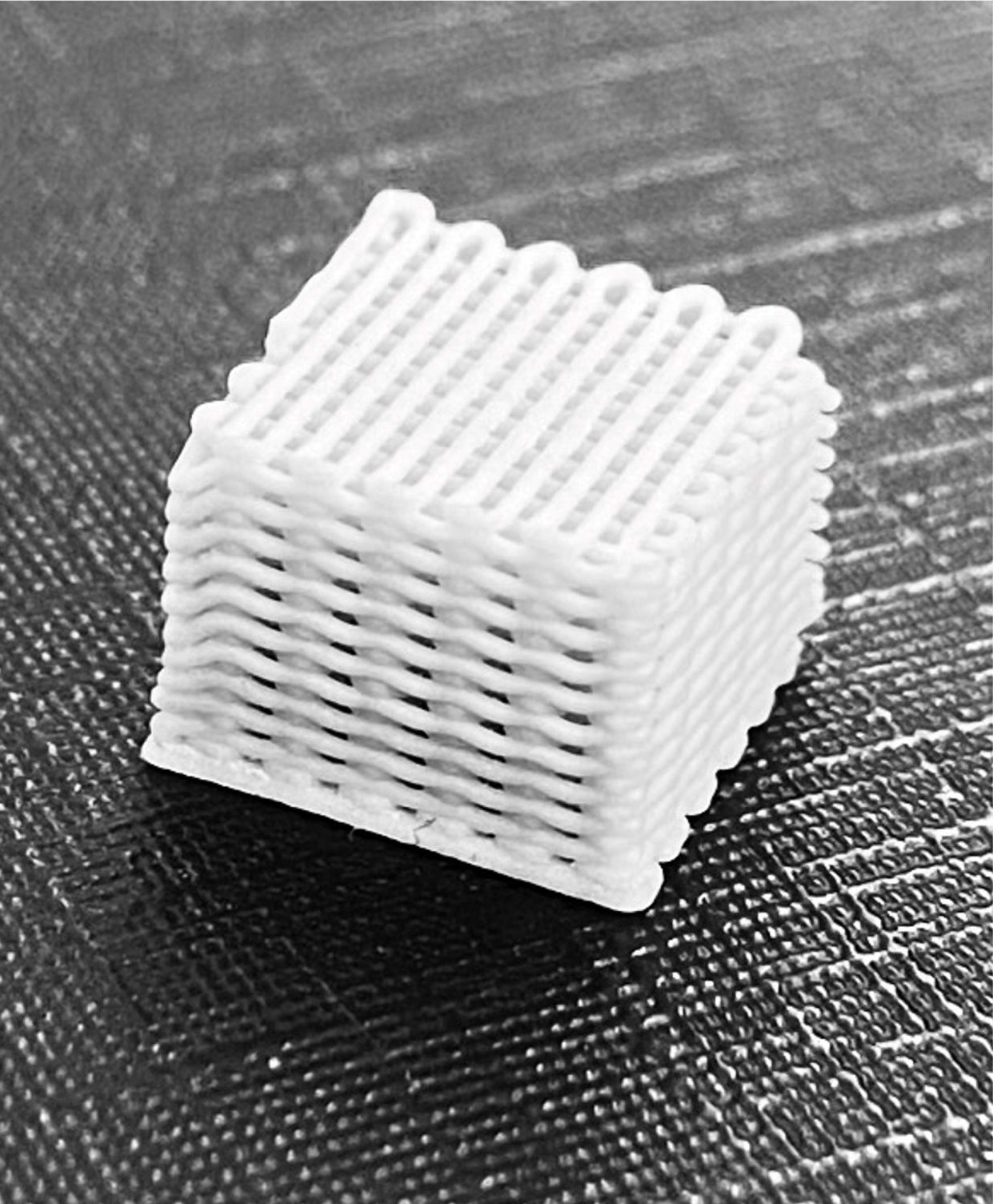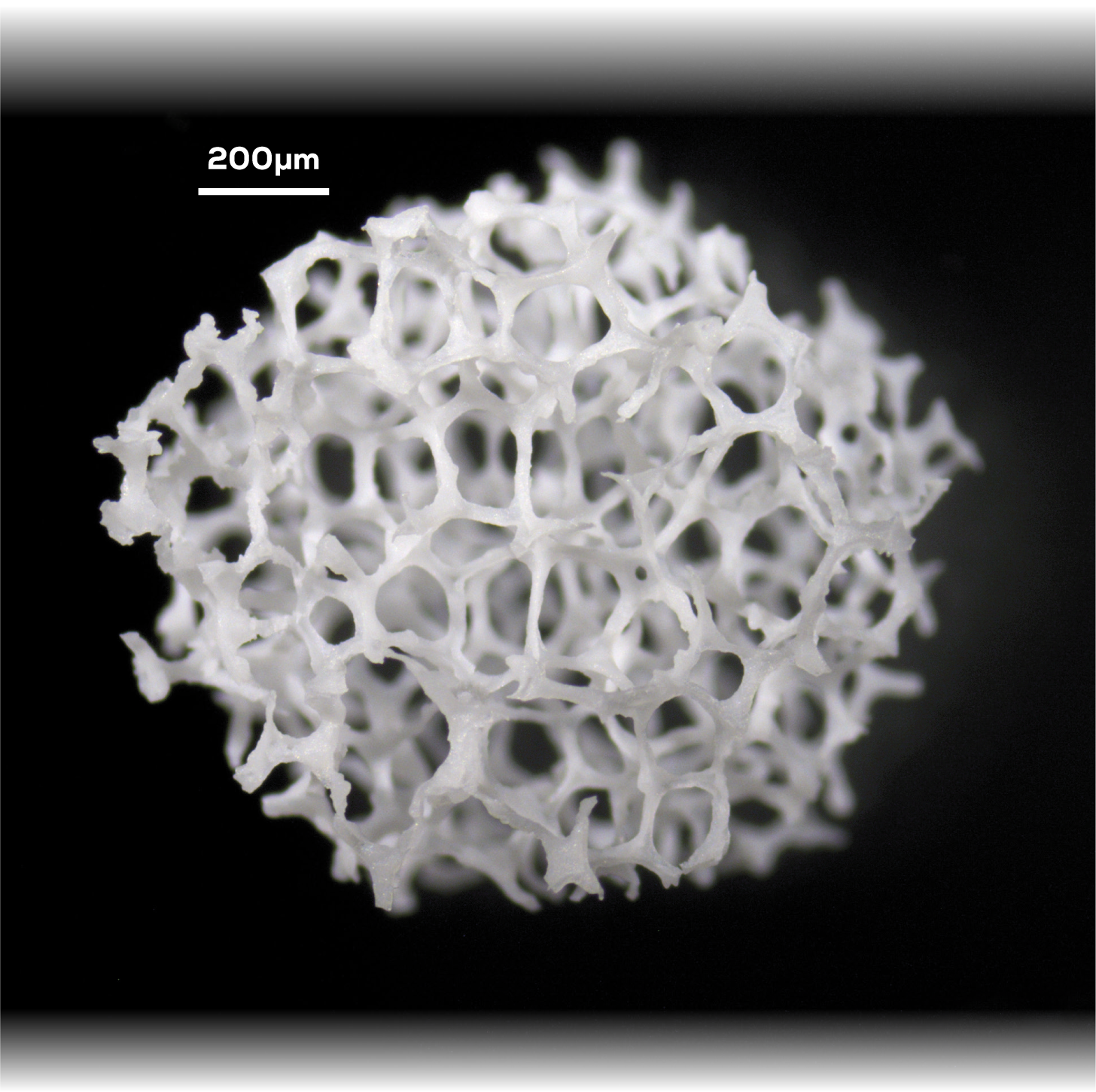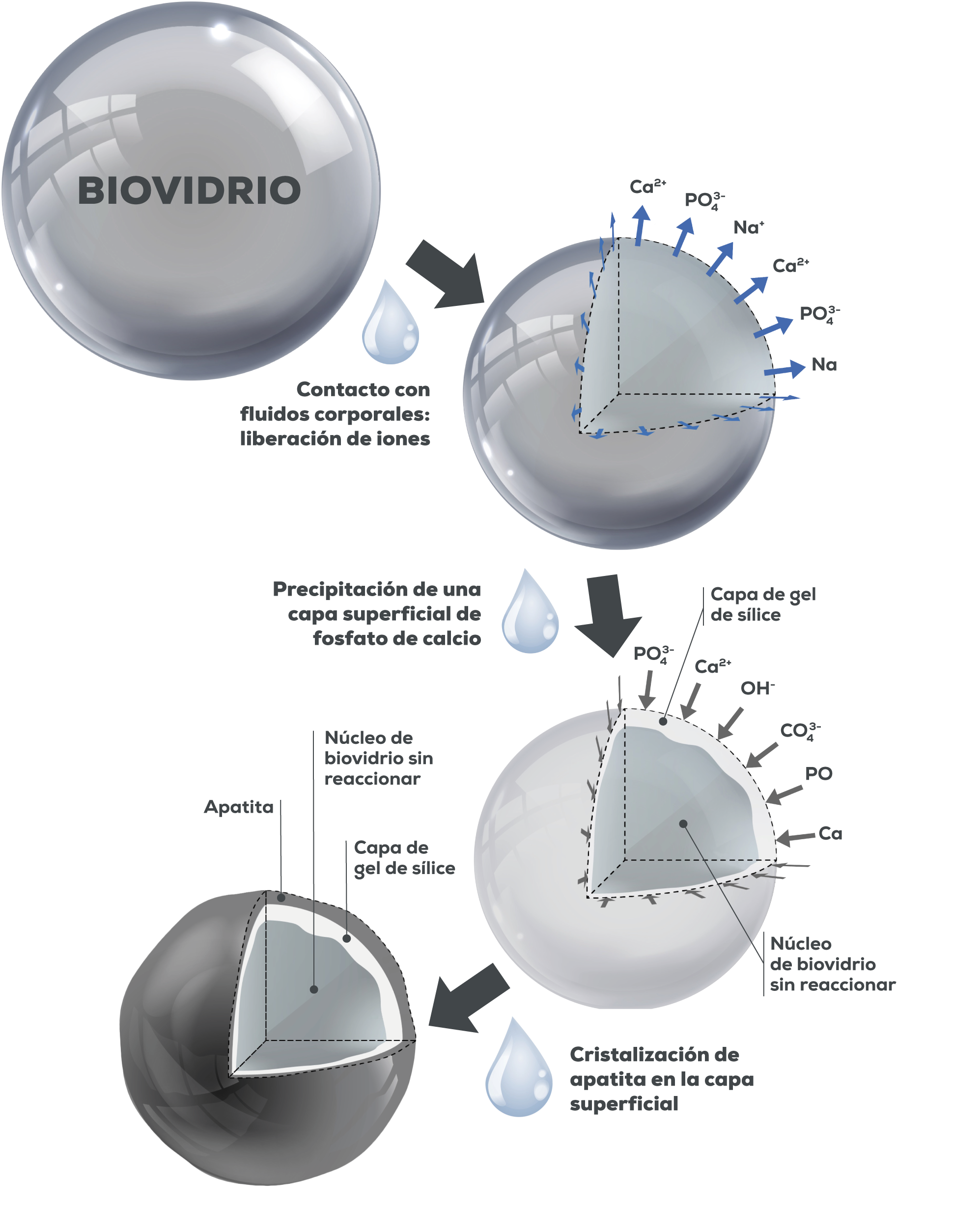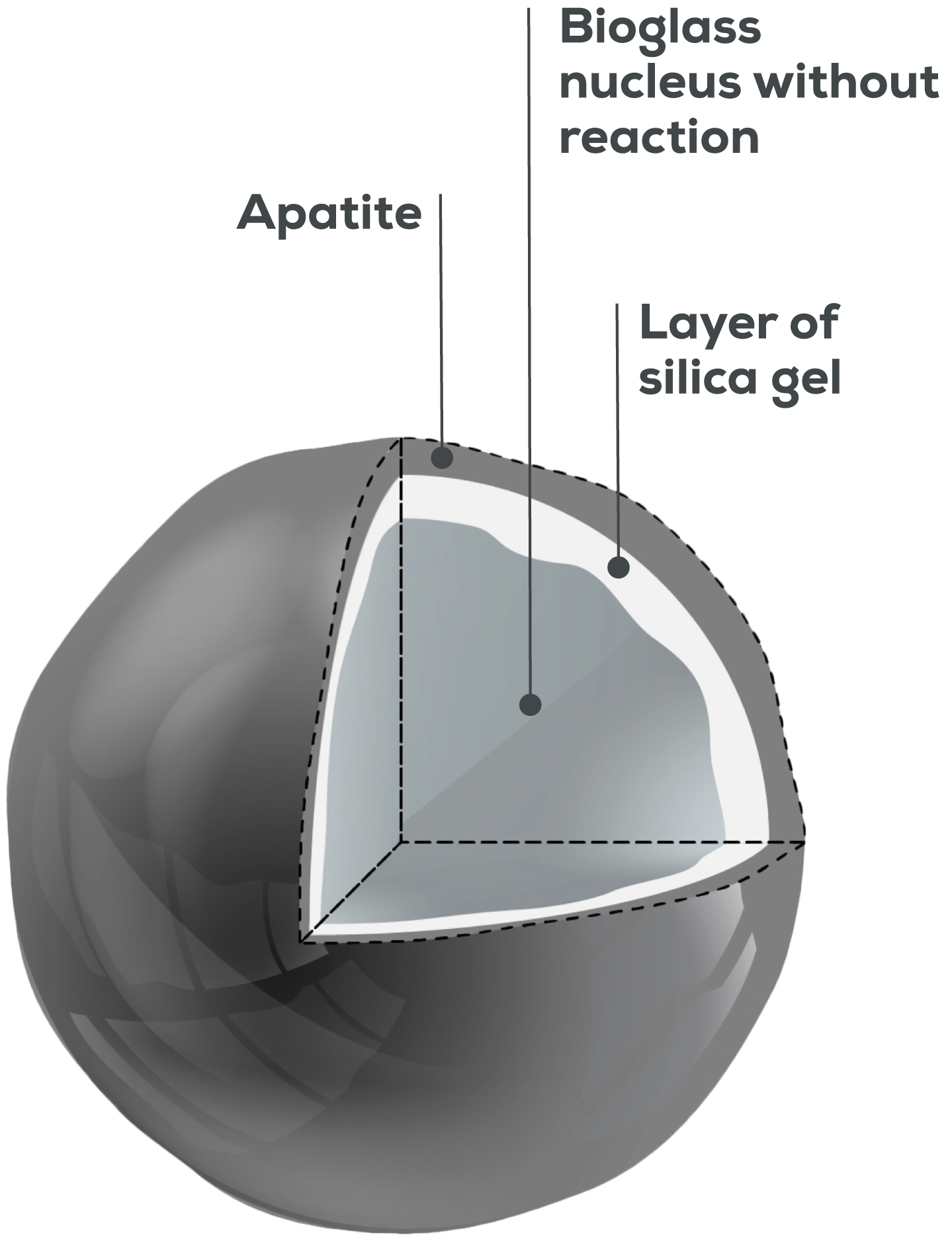Explore the exhibition



Microstructure of a strontium/leucite fluorapatite glass-ceramic material. M. Rampf, C. Ritzberger (Ivoclar Vivadent AG)

Bioactive vitreous scaffold printed in 3D. J. R. Jones (Imperial College, Londres)
Glasses that cure
Amongst the wide range of glasses used in medicine are the so-called ‘bioglasses’ or bioactive glasses, designed to dissolve inside the human body and assist natural self-repair mechanisms.
These are unique materials that actively stimulate the healing of tissue, as occurs in many skin or bone lesions, and which are also capable of eliminating antibioticresistant bacteria. In hospitals, bioglasses are used successfully to treat chronic wounds that fail to heal with conventional methods, or deep bone infections that do not respond to treatments based exclusively on antibiotics, such as chronic osteomyelitis.
Implants for bone repair
When a bioglass implant comes into contact with body fluids, such as blood, it undergoes surface dissolution, releasing calcium, phosphate and soluble silica. In this way, a layer of calcium phosphate forms on the surface of the glass which bonds with the damaged bone. As it is so similar to bone mineral, the cells of the body’s immune system do not perceive it as foreign. Then the calcium phosphate layer continues to grow and it integrates with collagen fibrils of the bone until the implant is fully incorporated into the healing bone.

Bioactive glass scaffold for bone tissue engineering. A. R. Boccaccini, M. Arango-Ospina (Erlangen-Nuremberg University)


Microstructure of a strontium/leucite fluorapatite glass-ceramic material. M. Rampf, C. Ritzberger (Ivoclar Vivadent AG)

Glasses that cure
Amongst the wide range of glasses used in medicine are the so-called ‘bioglasses’ or bioactive glasses, designed to dissolve inside the human body and assist natural self-repair mechanisms.
These are unique materials that actively stimulate the healing of tissue, as occurs in many skin or bone lesions, and which are also capable of eliminating antibioticresistant bacteria. In hospitals, bioglasses are used successfully to treat chronic wounds that fail to heal with conventional methods, or deep bone infections that do not respond to treatments based exclusively on antibiotics, such as chronic osteomyelitis.
Implants for
bone repair
Bioactive vitreous scaffold printed in 3D. J. R. Jones (Imperial College, Londres)
When a bioglass implant comes into contact with body fluids, such as blood, it undergoes surface dissolution, releasing calcium, phosphate and soluble silica. In this way, a layer of calcium phosphate forms on the surface of the glass which bonds with the damaged bone. As it is so similar to bone mineral, the cells of the body’s immune system do not perceive it as foreign. Then the calcium phosphate layer continues to grow and it integrates with collagen fibrils of the bone until the implant is fully incorporated into the healing bone.

Bioactive glass scaffold for bone tissue engineering. A. R. Boccaccini, M. Arango-Ospina (Erlangen-Nuremberg University)








